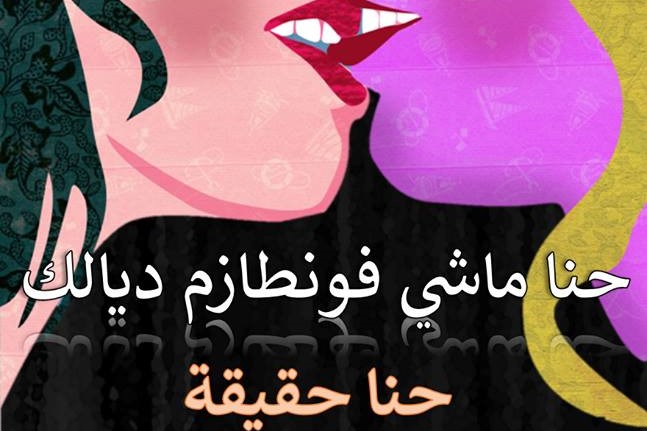The traditional Abyssinian representations of female homosexuality (féminine) can be summarized in the following points:
The sexual relationship between two women constitutes compensatory sexuality that achieves some satisfaction while waiting for a full sexual relationship with the man. Therefore, it is considered unreal and not serious sexuality. It is nothing but mere play and foreplay.
- Female homosexuality does not have significant consequences because there is no semen lost during it, no pregnancy results from it, and no risk of losing virginity accompanying it, all as a result of the absence of the male and his penis.
The majority of jurists did not say that the punishment for lesbianism is punishable by flogging or death, as is the case in the case of sodomy (although the Qur’an does not command the punishment for sodomy). The jurists were satisfied with saying that a lesbian should be punished, that is, by rebuking her or imprisoning her (at home), despite the existence of a hadith that says: “If a woman has intercourse with another woman, then they are both adulterers.” Saying ta’zir means that the jurists did not act on this hadith because it is a weak hadith and because they did not consider lesbianism to be adultery. In their view, adultery requires (natural) male penetration into the vagina, which cannot occur in a lesbian act. It should be noted that lesbianism is not mentioned in the Qur’an, so some jurists interpreted the verse “And those of your women who commit indecency…” as a metaphor for lesbian women.
Jurists attribute lesbianism to the length of the clitoris (clitoris) in a woman. The longer the clitoris, the greater the risk of lesbianism in the woman. Meaning that a long clitoris makes a woman feel sexual inclination toward women and act like an active male toward a female subject and object. According to them, the real lesbian is the active woman, just as the real homosexual is the active man due to his suffering from fetishism, a disease that makes him always want to be penetrated by males.
It is interesting to note that the Moroccan dialect does not give lesbianism and the clitoris any special names. In the absence of the name, there is no acknowledgment of lesbianism and the clitoris, but rather a denial of their importance and existence. Lesbianism is figuratively called a “rubber,” meaning a woman rubs her clitoris with another woman’s clitoris, which leads them together to reach clitoral climax (orgasme clitoridien). This is the maximum they can achieve due to the absence of the male, as the male is the condition for the climax of the vulva (orgasme vaginal). As for the clitoris, the common tongue calls it “the tongue” (the little tongue) or “the raisin” (that is, the little “cock”).
What are the developments that homosexuality is experiencing today in Morocco? Starting from the beginning of the third millennium, Morocco knew the emergence of the LGBT community in secret thanks to the Internet, and it means three categories: gay men and Lesbian women, transgender people (the male who feels that he is a male trans-woman and the female who feels that he is a female trans-man), Bisexuals (those who are sexually attracted to both sexes). The emergence of the LGBT community means the localization of two basic concepts: sexual orientation and gender identity. As for the first, it equates heterosexuality with homosexuality and does not see the second as a psychological disorder or abnormality, while the second recognizes the importance of self-definition of sexual identity, as what is important is a person’s feeling of being a man or a woman, regardless of being male or female, and regardless of his gender, that is, of his being socially constructed as a man. Or as a woman. This means that the interconnection between masculinity, masculinity, the feeling of masculinity, and attraction to women (heterosexuality) is not inevitable, and that it is an interconnection that establishes the prevailing continental sexual identities, and that breaking away from it is nothing but a rejection of those identities imposed by the abyssal society. The same logic applies to the connection between femininity, women, feelings of femininity, and attraction to men. The LGBT community calls itself queer, which is an English word meaning strange by rejecting the dominant sexual and gender models.
The emergence of the LGBT community in Morocco as a self-aware sexual minority means that homosexuality has not remained merely marginal sexual behaviors whose perversions themselves admit to being abnormal, but rather has become the basis of new identities, both individual and collective, that are different and reject what is prevalent sexually. It is a minority organized into secret societies demanding its normalization and recognition of equality with the prevailing heterosexual majority. The transition of homosexuality to the identity level is what drives most Moroccans to reject it more strongly and to fear and hate it (homophobia). Then families expel their queer/queer girls, and then some of those girls fall into sex work. It should be noted here that sexual work among the Mimiyya is heterosexual work, that is, with men, in order to earn a living. It is not enjoyable sex for her because her true sexuality is homosexual, which brings her pleasure and leads her to fall in love and romance. This is a new fact that should be recorded in the construction of the new female lesbian identity, which has given itself new names to announce a break with everything associated with lesbianism in terms of negative representations and practices.
What is new also lies in the coexistence of memes in order to get away from the family and its discontent and for the sake of the necessity of living that imposes financial independence from the family. There is also love and mutual respect as new feelings that govern the strong, non-transient relationship between memes. On the purely sexual level, there is a transcendence of the abyssal division of sexual roles, that is, the duality of the active masculine lesbian and the active feminine lesbian. Homosexuality in Morocco achieves a silent sexual revolution by deviating from the hymen in a female homosexual act. It is an objective feminist revolution, feminist because it is sexual independence from men, from marriage, and from the family, and objective in the sense that it occurs without a voluntary feminist awareness that aims to overthrow abiism as the prevailing sexual-gender system.
This is the same thing that is happening today in Morocco, when homosexual inclination is adopted on the part of the girl as an irreversible choice, as a choice that establishes a different sexual relationship that achieves self-crystallization to the fullest extent, without men, but not against men. This is because rejecting a man as a sexual partner does not stem from a radical feminist homosexual position that sees the man as an enemy from whom one must be sexually liberated. Rather, it only indicates a deep sexual tendency in the homosexual woman’s being. It is a part of her personality that the girl stops considering as an anomaly that must be rejected and treated.
In the end, it must be pointed out that women’s homosexual inclinations, as is the case with men’s homosexual inclinations, do not conflict with Islam in their view. Most members of the LGBT community place their faith above any jurisprudential reading that forbids homosexuality, gender transition, and sexual heterosexuality. Indeed, some of them believe that Ijtihad is necessary for a different interpretation of the sacred texts in order to reconcile homosexuality as a human right with Islam. “God loves all His creatures.” This is the principle of the meme community emerging in Islamic countries. It believes that the divine displeasure mentioned in Surat Lot is a punishment against homosexual rape, not against homosexuality. Hence, the Moroccan LGBT community sees that their primary struggle is not the struggle against Islam, but rather the struggle against the homophobic social culture that mistakenly believes that homosexuality is a choice that can be changed by a decision or thanks to treatment. It is also the struggle against Chapter 489 of the Criminal Code, which perpetuates this unfair discriminatory culture.Based on these data, it can be said that there has been a transition from homosexuality and lesbianism to homosexuality, from perversion to difference, from self-denial to self-acceptance, from a naughty awareness to a feeling of pride due to positive self-distinction, from viewing Islam as a forbidden, legitimate enemy to viewing it as an expression of God. He is tolerant, accepting, and equal to all his creatures. The new status of the Moroccan meme, in turn, indicates the sexual transition that Morocco is experiencing.
Dr. Abdul Samad Al-Dailami




35.01hv70c2vxbk7whkkhbbp09b24@mail4u.life
aspernatur placeat sit dicta voluptatem quaerat sint commodi alias repellendus sit libero. officia ut recusandae laudantium culpa magni illum quasi vitae. qui quo quod deleniti adipisci.
Ukrain-forum.Biz.ua
Very energetic post, I enjoyed that bit. Will there be a part 2? https://Ukrain-Forum.Biz.ua/
https://ukrain-forum.Biz.ua/
Wonderful goods from you, man. I’ve understand your stuff previous to and you’re
just ttoo fantastic. I actually like what you’ve acquired here, really like what yyou are ssaying and
the way in which you say it. You make it entertaining and you still take care of to keep itt sensible.
I can’t wait to read far more from you. Thiis is actually
a wonderful web site. https://ukrain-forum.Biz.ua/